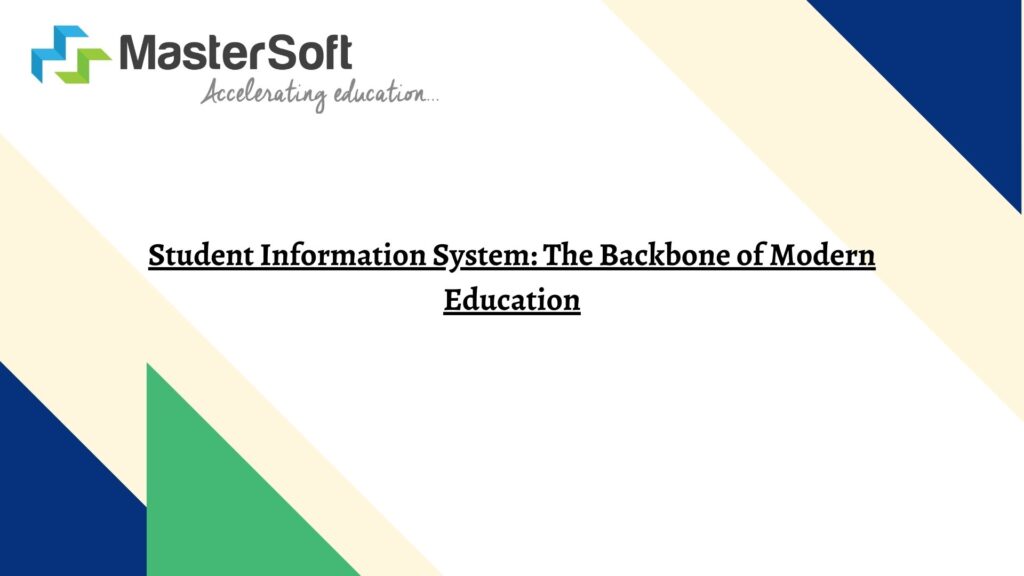
Managing student data effectively is one of the biggest challenges for educational institutions today. Traditional record-keeping methods are time-consuming, prone to errors, and inefficient. This is where a Student Information System (SIS) comes into play.
A Student Information System is a comprehensive software solution that helps schools, colleges, and universities manage student data, track academic performance, streamline administrative tasks, and enhance communication between stakeholders. This blog explores the key features, benefits, and impact of an SIS on modern education.
What is a Student Information System (SIS)?
A Student Information System (SIS) is a centralized platform that allows educational institutions to store, manage, and process student-related information. It serves as a digital database that records student details such as enrollment, attendance, grades, financial transactions, and communication history.
Modern SIS platforms integrate with Learning Management Systems (LMS), online payment gateways, and communication tools, making them a must-have for digital transformation in education.
Key Features of a Student Information System
An SIS comes equipped with various features to simplify academic and administrative processes.
1. Student Enrollment & Admission Management
-
Automates the admission process, including application submissions, document verification, and enrollment.
-
Reduces paperwork and improves efficiency in student onboarding.
2. Attendance Tracking
-
Enables teachers to mark attendance digitally.
-
Provides real-time attendance reports and notifications to parents.
3. Grade and Exam Management
-
Allows institutions to record and calculate grades efficiently.
-
Generates report cards, transcripts, and progress reports automatically.
4. Timetable and Scheduling
-
Automates the creation of class schedules, ensuring no conflicts in room or teacher availability.
-
Sends reminders for exams, lectures, and extracurricular activities.
5. Fee Management & Online Payments
-
Helps administrators track student fees, generate invoices, and send automated payment reminders.
-
Integrates with multiple payment gateways for secure online transactions.
6. Communication Portal
-
Facilitates seamless communication between students, parents, teachers, and administrators via emails, SMS, or push notifications.
-
Provides updates on academic progress, attendance, and events.
7. Library Management
-
Manages book issuance, returns, and late fee collection.
-
Maintains a digital database of available resources.
8. Student Performance Analytics
-
Generates detailed reports on student progress, helping educators identify strengths and areas for improvement.
-
Uses AI-driven insights for personalized learning recommendations.
9. Mobile Accessibility
-
Many modern SIS solutions offer mobile apps, allowing students and parents to access information on the go.
Benefits of a Student Information System
A well-implemented SIS provides multiple advantages for students, educators, and administrators.
1. Enhances Efficiency and Reduces Workload
An SIS automates tedious administrative tasks, allowing teachers and staff to focus more on education rather than paperwork.
2. Improves Student Performance Tracking
With detailed reports and analytics, teachers can monitor student progress in real time and take proactive measures to enhance learning outcomes.
3. Strengthens Parent-Teacher Communication
Parents can stay informed about their child’s attendance, grades, and academic progress, leading to better parental involvement.
4. Ensures Data Security and Privacy
Unlike paper records that can be lost or damaged, an SIS securely stores all student data with restricted access, ensuring compliance with data privacy regulations.
5. Reduces Human Errors
Manual data entry is prone to mistakes. With an SIS, automated processes minimize errors in grading, attendance tracking, and fee collection.
6. Facilitates Remote Learning
Integration with online learning platforms and mobile access ensures that students and teachers can interact digitally, making remote education seamless.
7. Cost-Effective Solution
Though there is an initial investment, an SIS significantly reduces operational costs in the long run by automating processes and eliminating paperwork.
How a Student Information System Impacts Modern Education
With the rapid adoption of EdTech, an SIS plays a crucial role in transforming the education sector.
1. Supports Hybrid and Online Learning
As institutions shift towards blended learning models, an SIS ensures smooth operation by integrating with virtual classrooms and e-learning tools.
2. Enhances Institutional Reputation
A well-managed institution with seamless operations attracts more students and maintains a positive reputation.
3. Enables Data-Driven Decision-Making
School administrators can make informed decisions based on student performance, attendance trends, and financial reports.
4. Ensures Regulatory Compliance
An SIS helps institutions adhere to local and international education standards by maintaining accurate records and reports.
5. Promotes Sustainability
By digitizing student records, attendance, and fee collection, an SIS reduces paper usage, contributing to a greener environment.
Choosing the Right Student Information System
Selecting the right SIS for your institution is crucial. Here are key factors to consider:
1. Scalability
Ensure the system can grow with your institution and handle increasing student data.
2. User-Friendly Interface
A well-designed SIS should be easy for teachers, students, and parents to navigate.
3. Integration Capabilities
Look for an SIS that integrates with LMS, accounting software, and other EdTech tools.
4. Customization
Each institution has unique needs, so opt for an SIS that allows customization.
5. Security and Compliance
Ensure the system follows data protection laws such as FERPA (in the U.S.) or GDPR (for European institutions).
6. Cloud-Based vs. On-Premise
-
Cloud-based SIS offers remote accessibility and automatic updates.
-
On-premise SIS gives institutions full control over their data but requires in-house IT support.
The Future of Student Information Systems
With advancements in Artificial Intelligence (AI), Machine Learning (ML), and Big Data, the future of SIS is evolving.
1. AI-Powered Predictive Analytics
Future SIS platforms will use AI to predict student performance trends and recommend personalized learning strategies.
2. Blockchain for Secure Data Management
Blockchain technology can enhance data security and prevent unauthorized modifications.
3. Virtual Assistants & Chatbots
AI-driven chatbots will provide students and parents with real-time academic updates and support.
4. Gamification & Student Engagement Features
Interactive dashboards and gamified learning modules will enhance student motivation and participation.
Conclusion
A Student Information System (SIS) is no longer a luxury but a necessity for educational institutions. It enhances efficiency, streamlines administrative processes, and improves communication between students, parents, and educators. With the right SIS, schools and universities can digitally transform their operations and provide a seamless learning experience.
Investing in a robust SIS ensures better student outcomes, improved institutional management, and a competitive edge in the ever-evolving education landscape.





